How to build a marketplace with no code in under 15 minutes
In this article I'll show you how you can build a marketplace with no-code tools in less an hour!

One of the most popular type of business ideas for IT products is some kind of a marketplace. Marketplace for craftspeople, marketplace for dog-walkers, marketplace for cat-sitters, marketplace for flower delivery, marketplace for cleaning services, marketplace for... you got the idea.
Everybody has already talked about various aspects of launching a marketplace, including one of the best (if not the best) series of posts on marketplaces from Lenny Rachitsky. However, all of these posts became a bit outdated in 2020. Why? Because it is no longer difficult to launch a marketplace. More so it is simpler and faster to launch a marketplace to check if there is demand for such a product rather than run a market research.
Especially taking into account that marketplace users only need 2 features: create and look through posts. Providers need to get more clients, clients need to search, sort and filter providers. That's all folks! Even registration is not required to test the demand. Take Craigslist for instance — the simpler your marketplace is, the more chances there are it will become successfull.
So I talked the talk but what about walking the walk? Is it really that simple to build a marketplace? Can it even be done in 15 minutes? Can it be done without coding skills? Yes, yes and yes!
I'm going to show you how to build a complete marketplace from scratch using no code tools in less than an hour, just to show you how simple it is. Obviously, you'd rather build everything from scratch using actual developer tools to support a bit more than what we are going to build today — like editing and deleting posts after they are created, and a nice UI to show the listings to clients. Take this tutorial as a proof of concept and build on top of it.
Let's build a marketplace for second-hand engagement rings! Have you ever tried to sell a diamond? It's almost impossible! And the prices on brand new ones? Ridiculous! Let's launch a second-hand market for engagement rings and call it "Engage me now!"
The table
First, we will use Airtable service to act as our database and as our main listing website where clients will be able to search, sort and filter the posts. You can use Google Sheets or any other alternative, no need to be hooked on Airtable. However, even the free plan on Airtable should be enough.
Let's sign in and create our database!


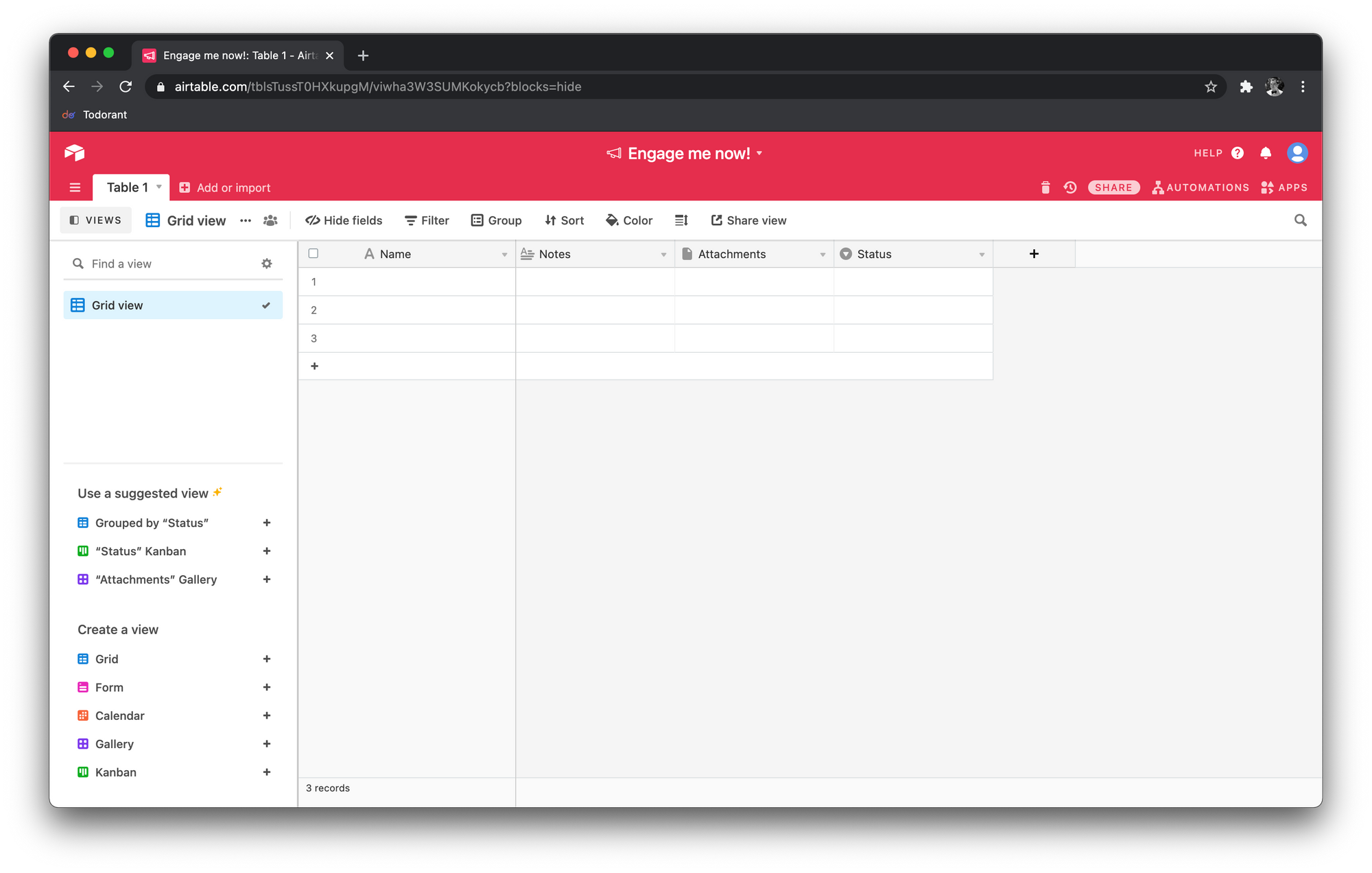
We need to change the columns a bit. Let's leave the listing name, notes, attachments, price and contact.
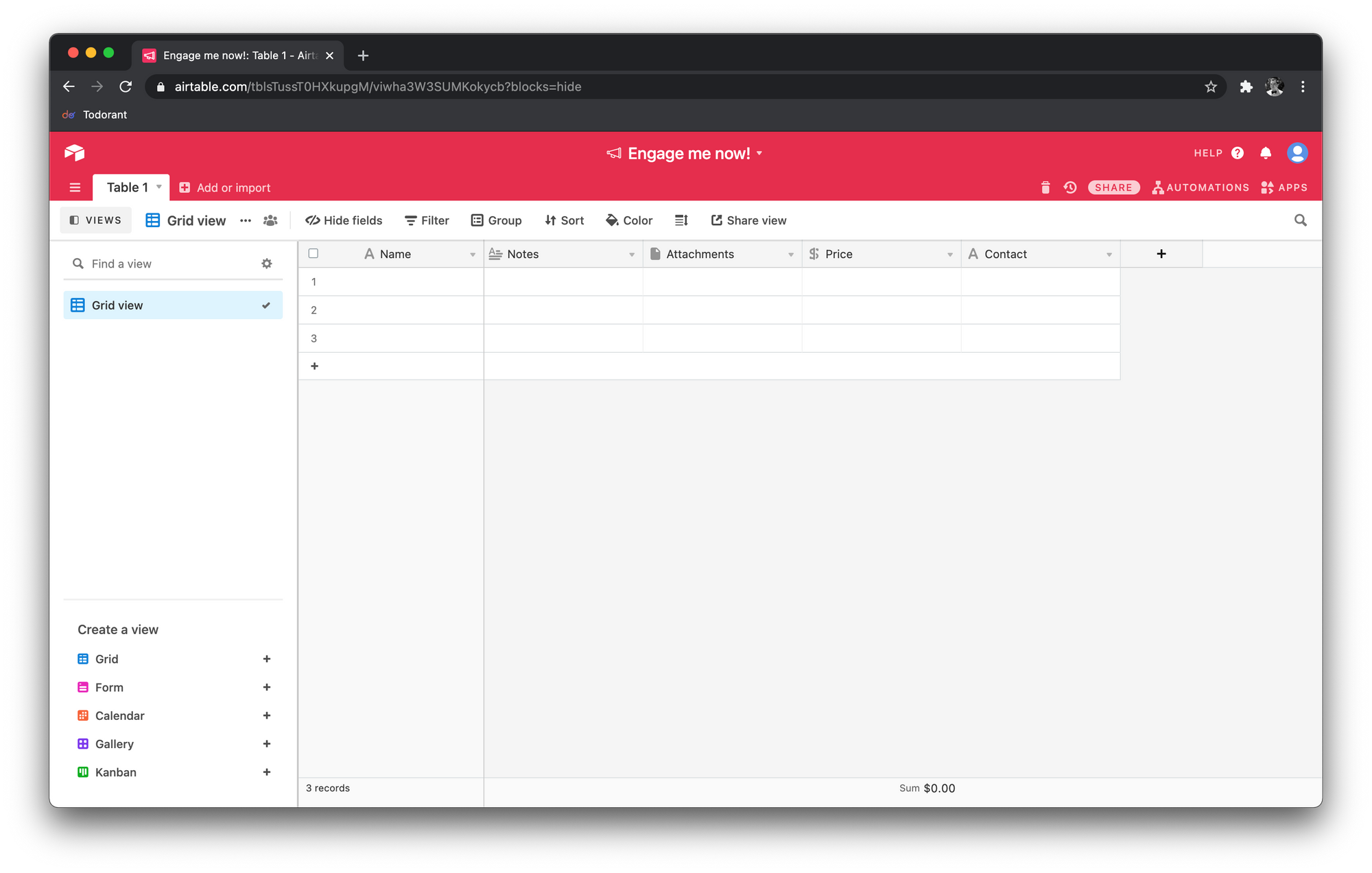
Now we'll create a form that will allow us to populate the rows.
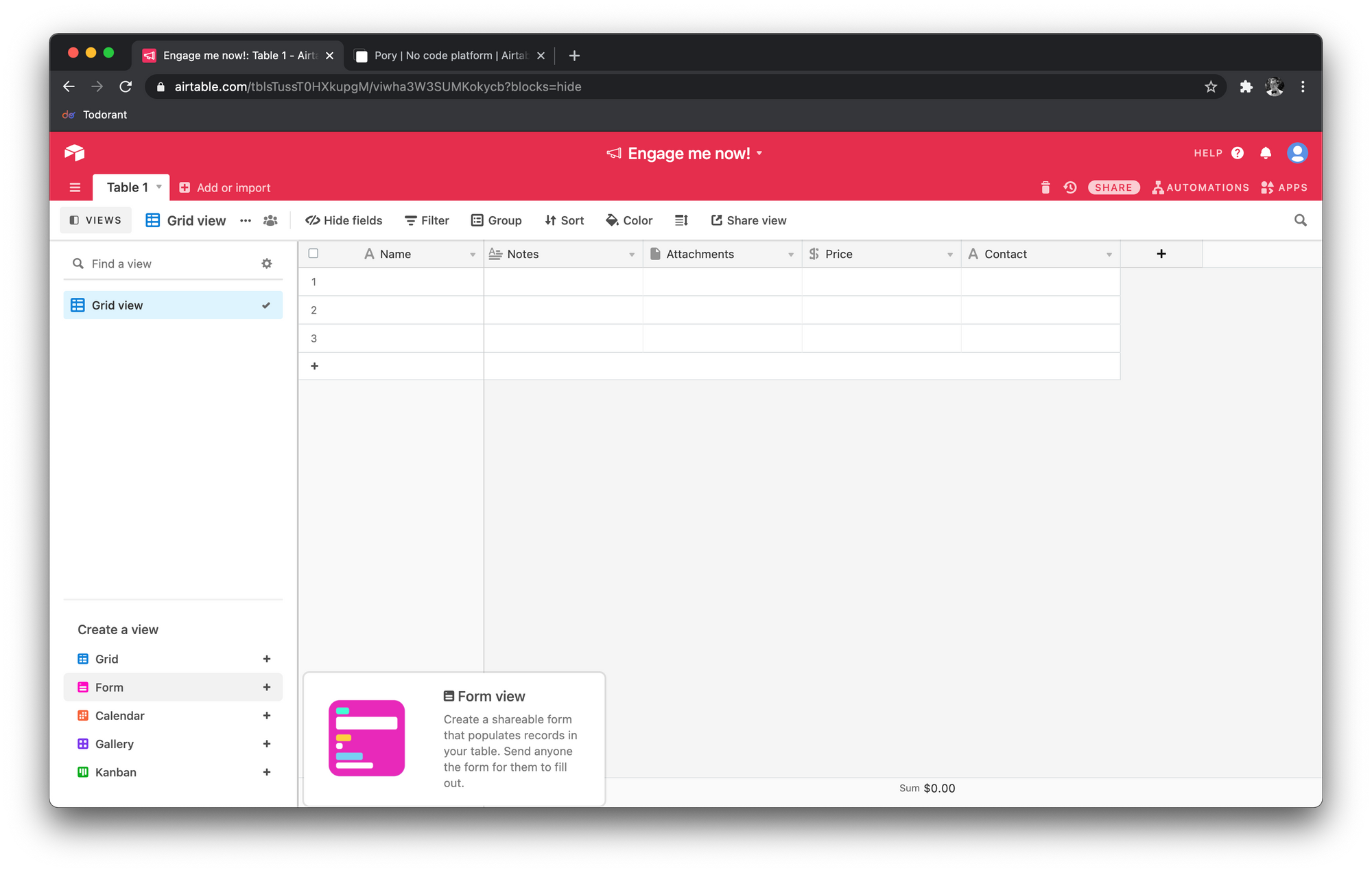
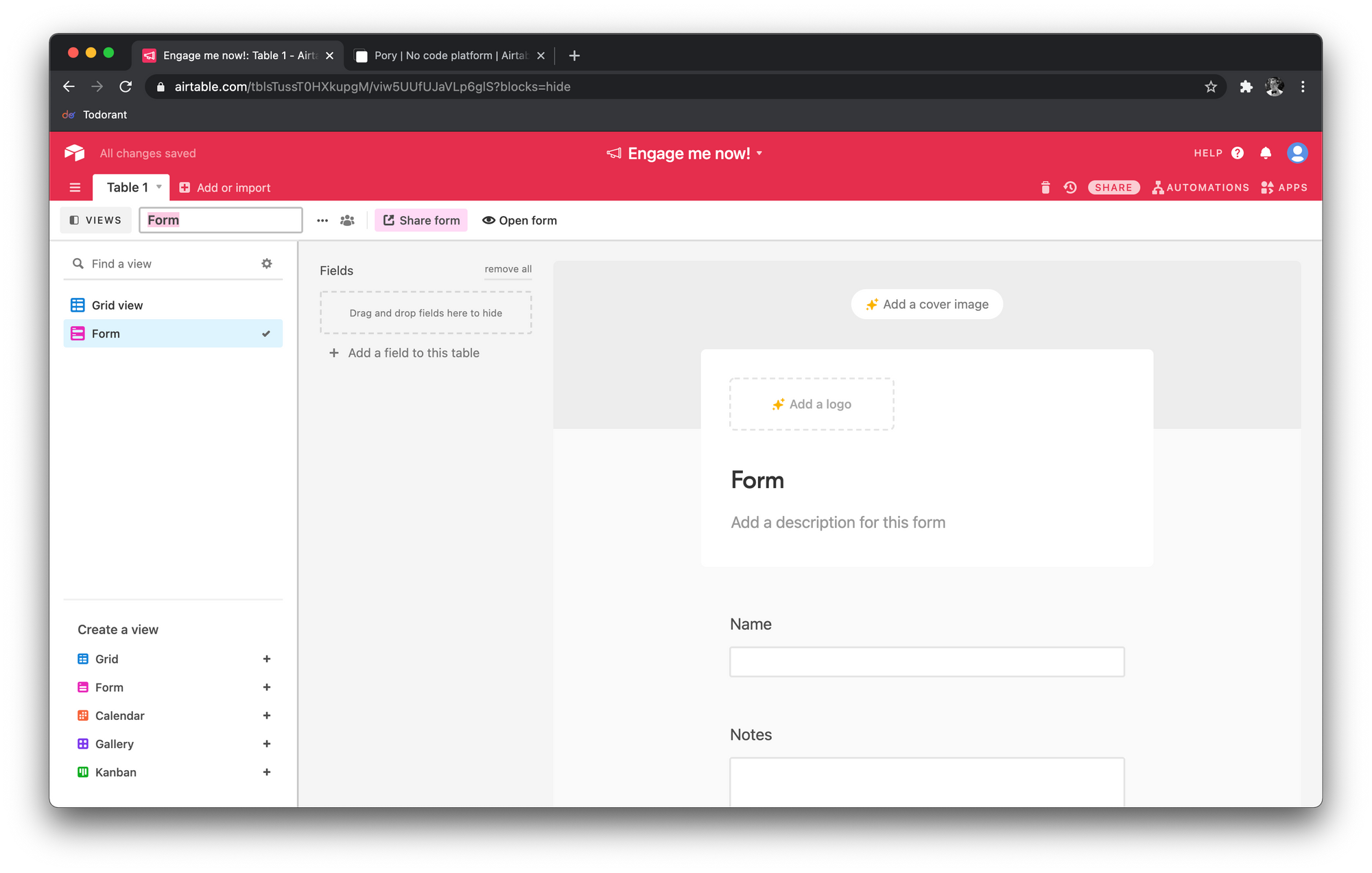
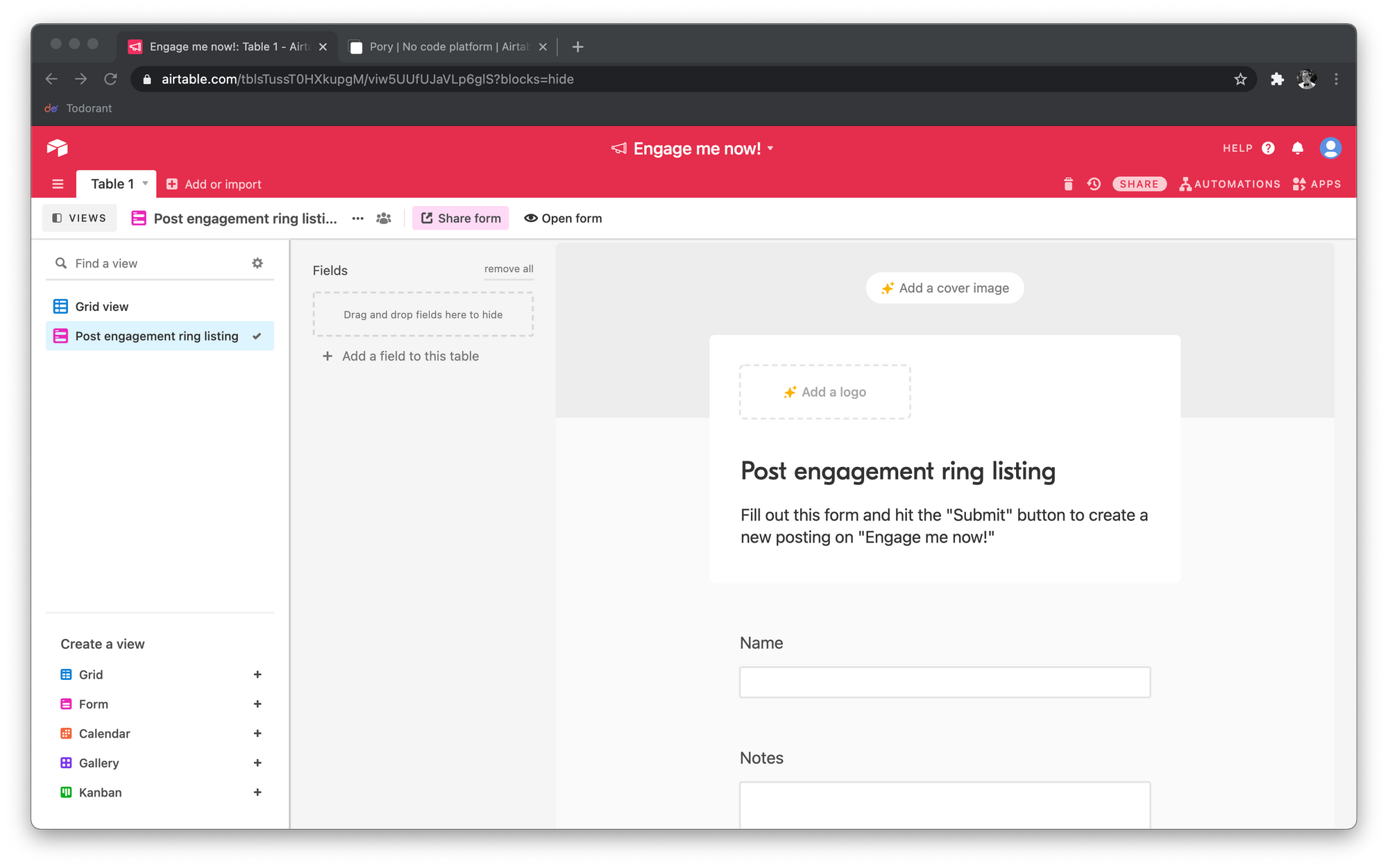
You can now share the form with the world!
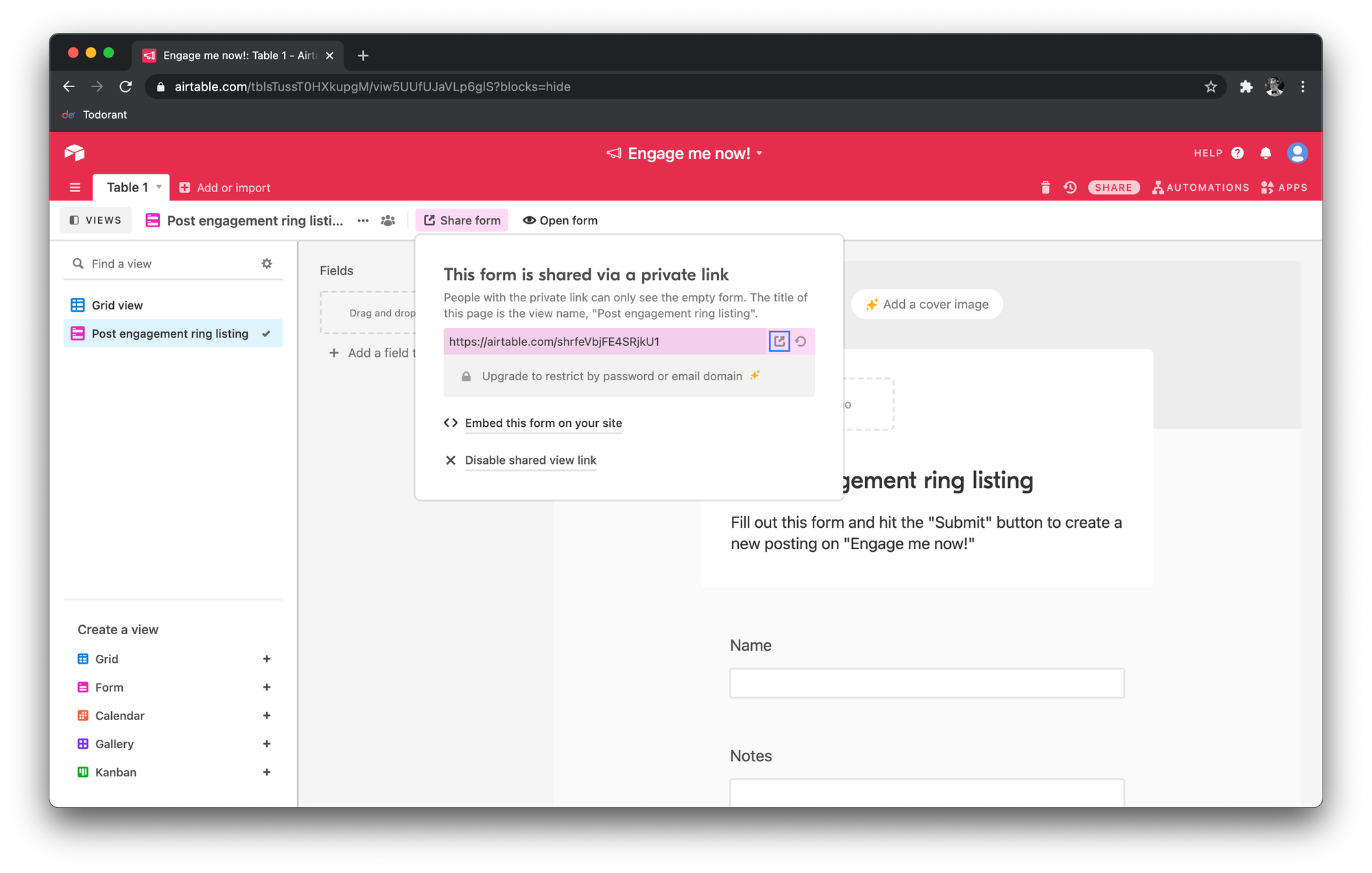
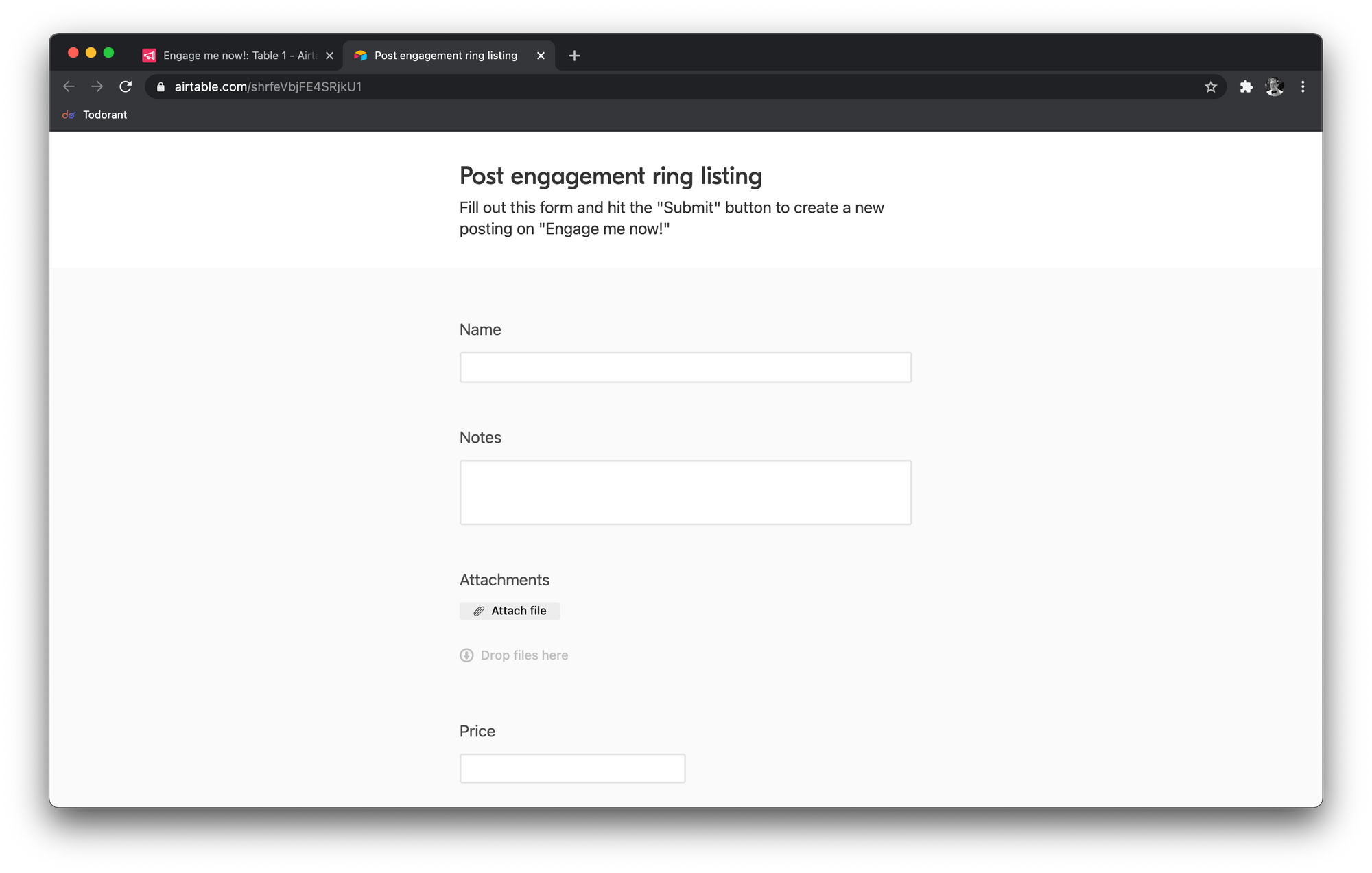
Let's try the form out.

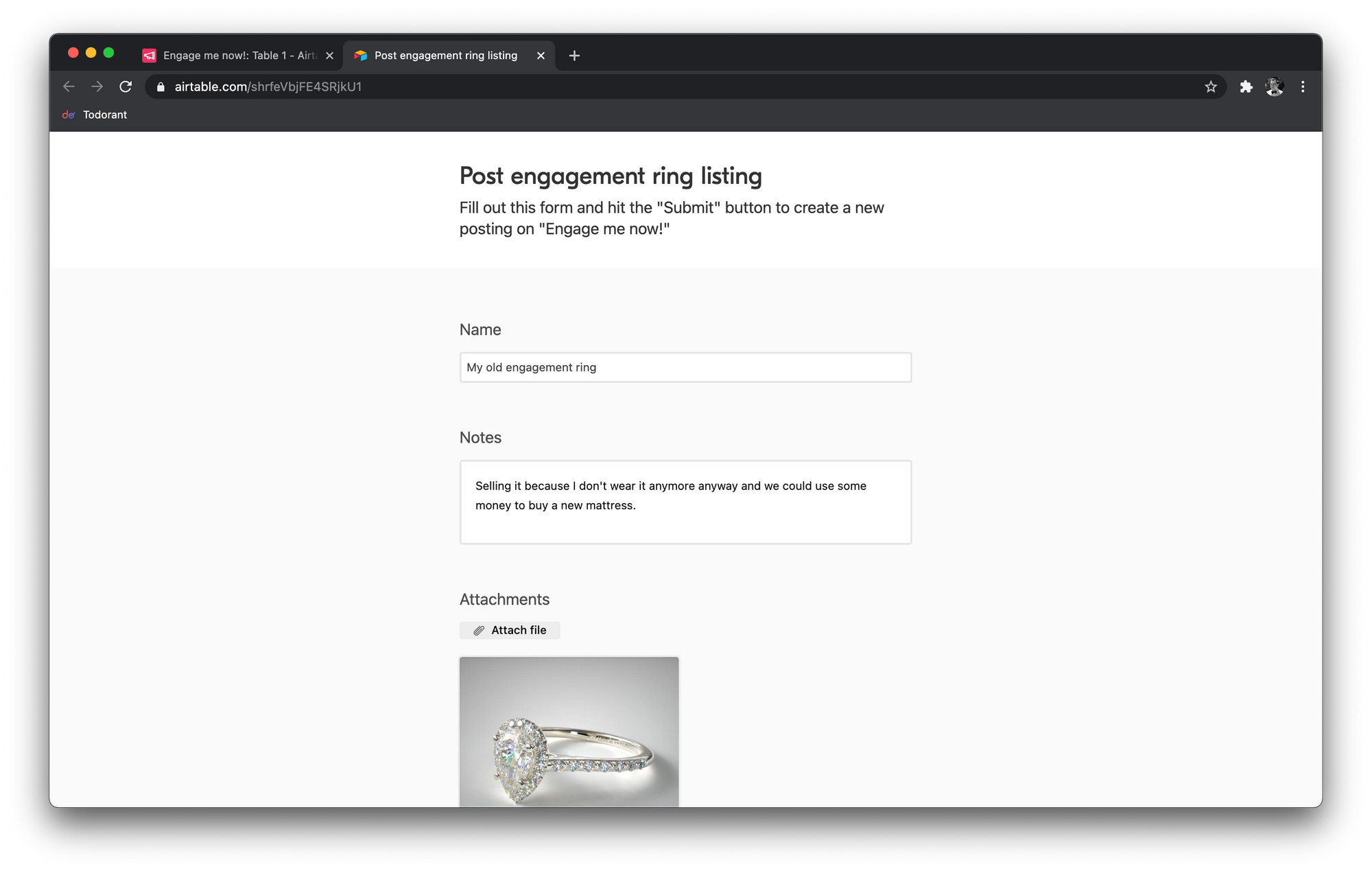
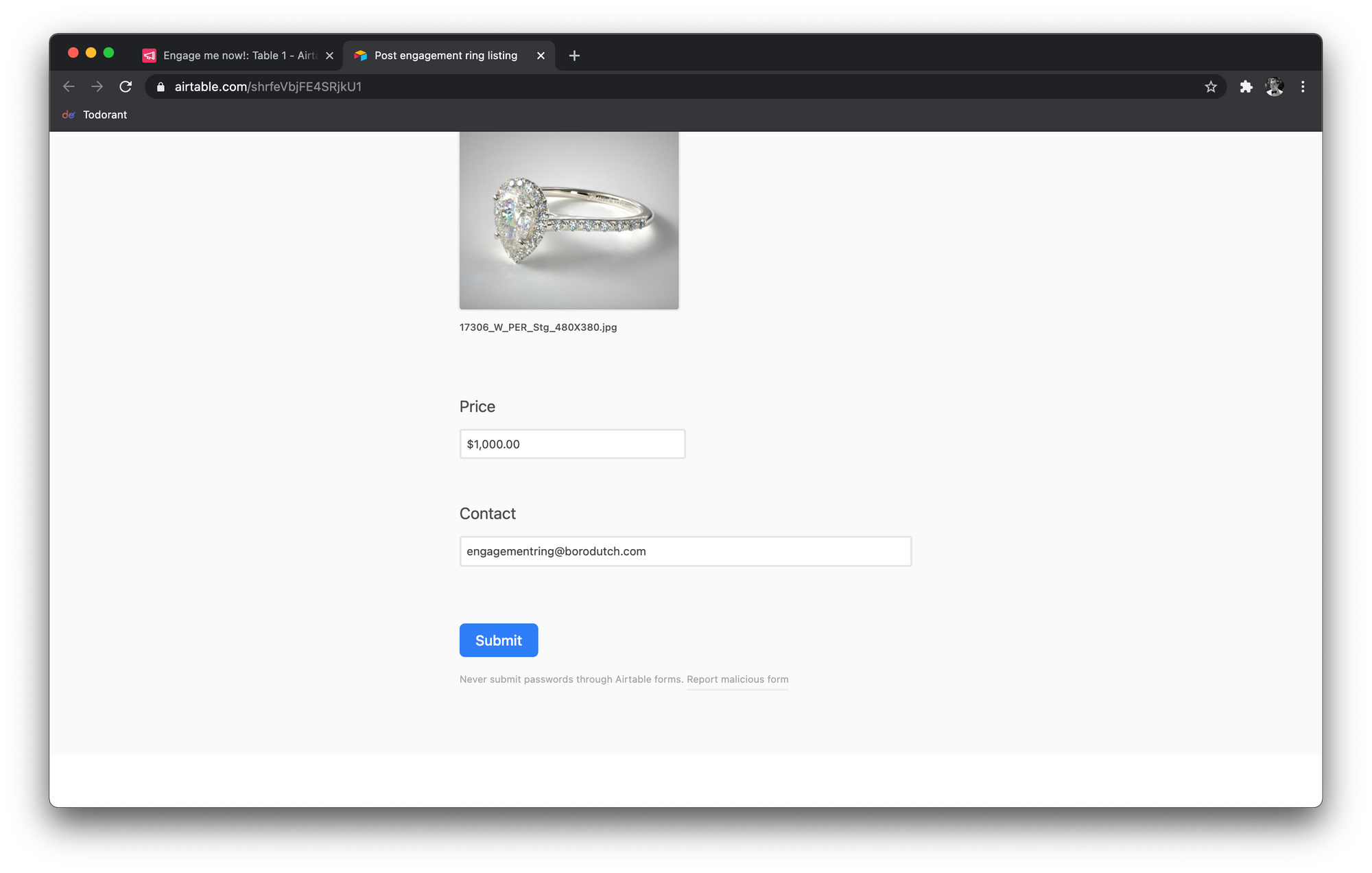

Let's create a share view for our database to show to clients!

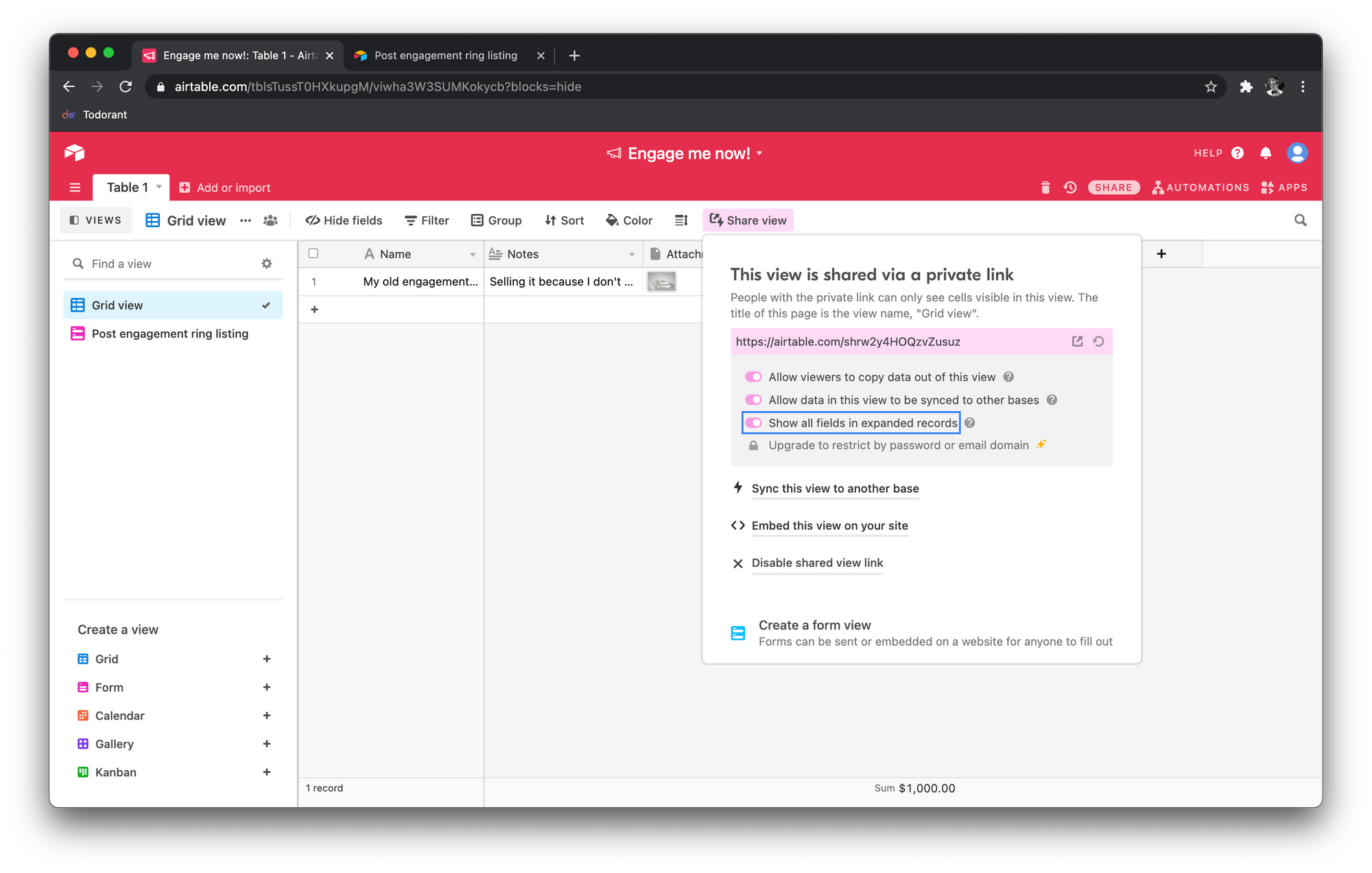
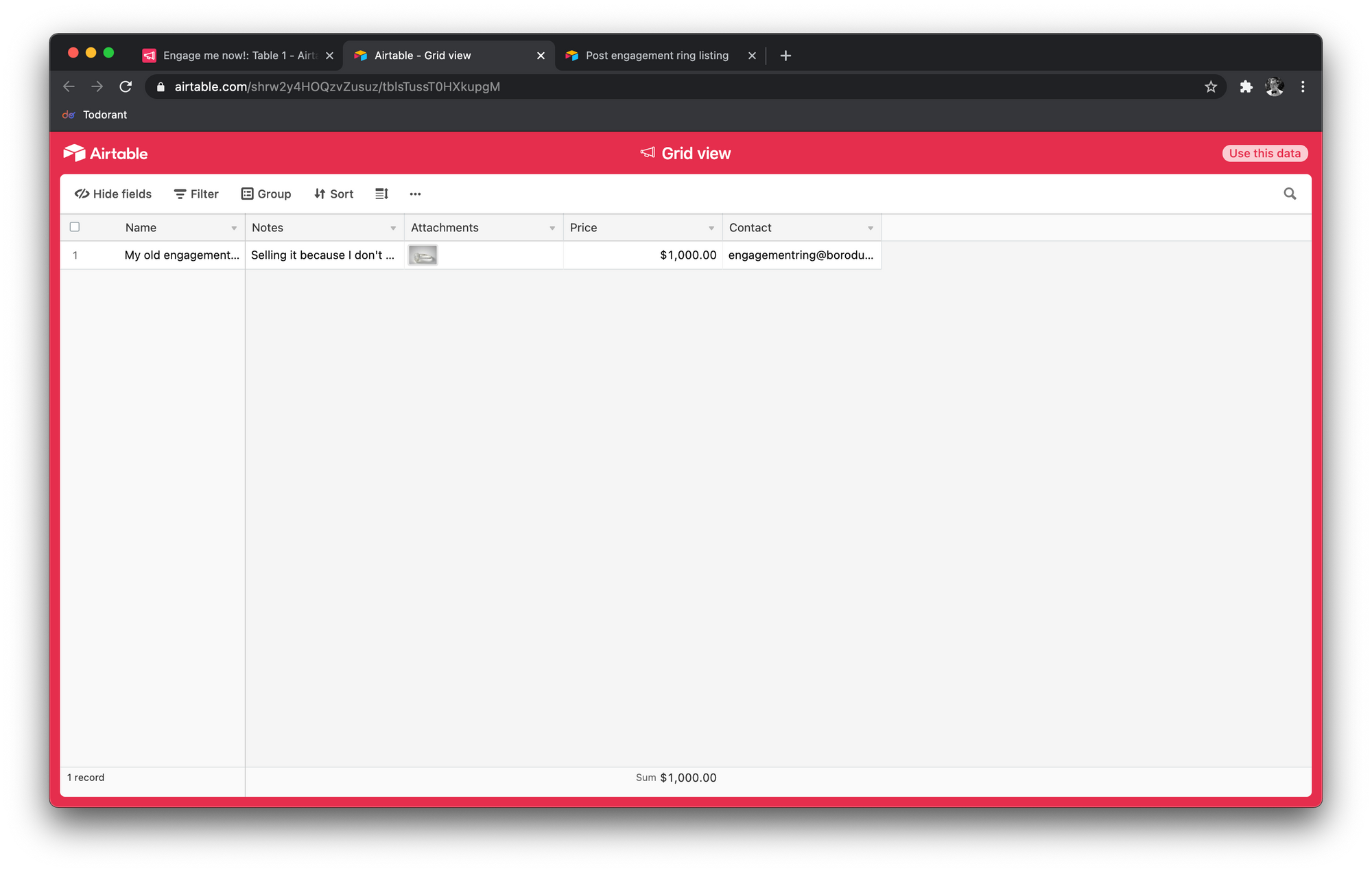
That's all folks! We have built the listings website and the form to submit new listings! Check it out, it's live, it works and it doesn't cost me a cent. This easy service allows providers to post new listings and clients to search, filter and sort listings the way they want — contacting the providers directly afterwards.
Conclusion
What else can you do? Let's say you have — I don't know — a few hours more to improve this service? Then you can add another service that builds websites from the data from Airtable — fortunately there are plenty of them, there are even free ones.
You can also create rules and automations in Airtable to delete old listings by checking their date created against the current date. At some point you might introduce a way to edit and delete posts to the posts authors.
For the form entries you can check the notification checkbox and you will get all the form submissions to you email as well. This will allow you to post-moderate the listings. You can also send the posts from the form to a separate table where you can pre-moderate the listings and use Airtable automations to move the approved listings to the public table.
All of it can be done with no code at all in 2020 and in 1-2 hours of your time. It is well worth it to test marketplace ideas this way to check if there is any demand for such a product. It is easier, faster, more powerful and insightful than running a traditional market research.
You can even run ads on the Internet to bring traffic to this marketplace and come up with useful metrics (e.g. cost per new listing).
I hope this article provided you with enough guidance and motivation to quickly try out your marketplace idea in a matter of hours instead of spending years to build a complicated marketplace that no one will ever need.
Cheers!

